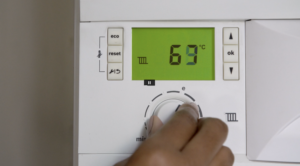What Is A Sole Trader And How Do I Register As One?

You have a business idea and you’re ready to launch it! But there is an important question you must address: which kind of business organisation would you like to set up and how do you go about setting it up.
There are three types of business organisations: sole trader, partnerships, and corporations. In this article, we focus on the various questions raised about operating your business as a sole trader and how you can register as one in the UK.
What is a sole trader?
A sole trader, or sole proprietor, is a person who owns a business exclusively, incurs its profits and losses, and usually carries out the daily operations of the business. Sole traders are self-employed and get little to no help running their businesses. This business organisation is ideal for small businesses that offer goods and services to family and friends and smaller communities.
What is the difference between self-employed and sole trader?
As mentioned above, a sole trader is self-employed, so this question may raise eyebrows; however, it is a question most soon-to-be sole traders usually ask. In truth, there is little difference between the two terms. Running a business as a “sole trader” refers to the structure of your business. There are three forms of business structures or organisations: sole trader, partnerships, and cooperation (or limited company). On the other hand, the term “self-employed” refers to the manner or status of your employment. You are responsible for handling the daily activities of your business as well as the success and failure of the business.
What are the advantages and disadvantages of being a sole trader?
There are numerous reasons you should consider creating a sole trader business. Here are a few:
Few tax responsibilities
Simple registration process as there are few legal obligations and restrictions
Freedom to make changes whenever you want or need to
Receive all the profits
Complete control of business
However, you should be aware of another side of the coin. Here are a few disadvantages of being a sole trader:
Sole traders have unlimited liability. This means that the business’s finances are merged with their personal finances. Therefore, should the business be insolvent or face debt, the assets of business owners under this business organisation can be affected.
Sole responsibility of your business can be overwhelming
Limited sources of investors as sole traders are usually seen as “unattractive”
How do you register as a sole trader?
Once you’re convinced that being a sole trader is the ideal business structure for your business idea, the step is how to register as a sole trader. Fortunately, it’s not a complicated process. You will need to register with the HM Revenue and Customs (HMRC). This can be done in three ways:
You can choose to fill out an online form on the HMRC’s website
Print the form, fill it in, and have it delivered by post
Or call the HMRC
Once you have completed the registration process above, you will receive a Unique Taxpayer Reference, a 10-digit number, and an activation code for your online account. This would be used to complete annual self-assessment returns. It’s that simple!
Can I get sole trader insurance to protect me?
If you are considering running a sole trader business, you should consider getting insurance. Doing so gives you and your business some protection in case of financial harm, serious injury, and accidents.
When should I change from sole trader to limited company?
Pinpointing the exact time you should change from being a sole trader to a limited company is tricky. Before doing so, you must research what a limited company is and its pros and cons. Next, you must decide whether your business would be a private or public limited company and understand each structure’s legal requirements and obligations. Once you are sure of this decision and meet all the legal requirements, you can contact the HMRC to change your business structure and follow the registration process.




